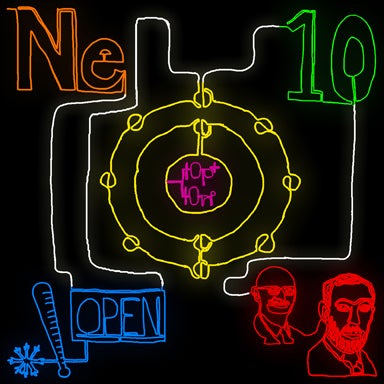Bayside Secondary School, Belleville, Ontario, Canada

Original artwork was created by Anthony Curran, grade 9 student; contributions to summary provided by Meghan Bush, Anthony Curran and Maddie Pilon. Teacher: Sam Mohamdee, Bayside Secondary School, Belleville, Ontario, Canada
Atomic properties*
Name:
Neon
Symbol:
Ne
Atomic
number:
10
Atomic
mass:
20.1797
amu
Melting
point:
-248.6°C
Boiling
point:
-246.053°C
Density:
0.0008999
g/cm3
Electronegativity:
No
data
#
of
Isotopes:
3
State:
Gas
Colour:
Colourless±
Classification:
Non-metallic±
* Haynes, W. M. (2011). CRC Handbook of Chemistry and Physics, 91st edition: http://www.hbcponline.com/ Retrieved April 7, 2011
± Winter, M. (2010). Home of the Periodic Table. Retrieved April 8, 2011, from Web Elements: http://www.webelements.com/